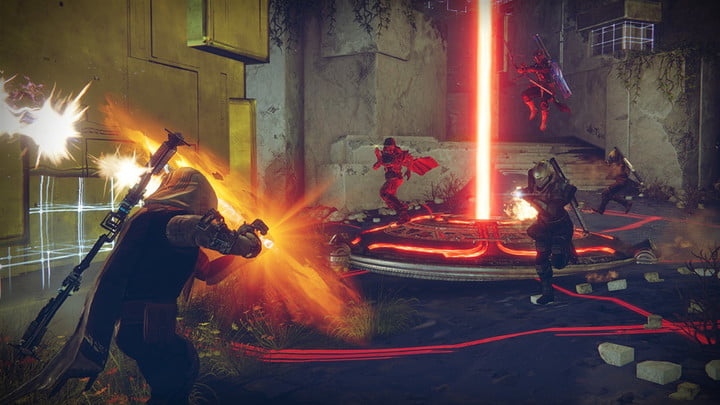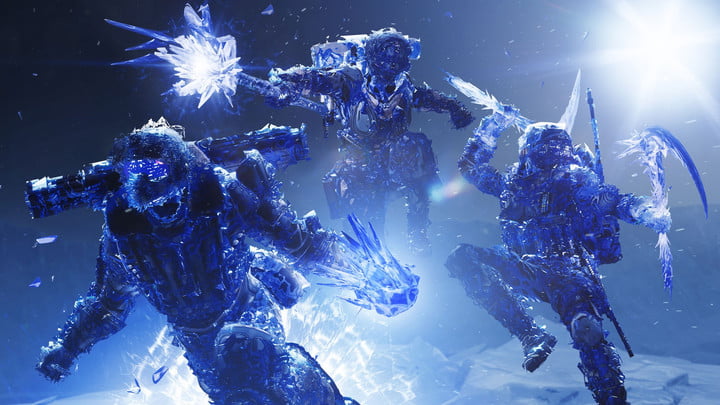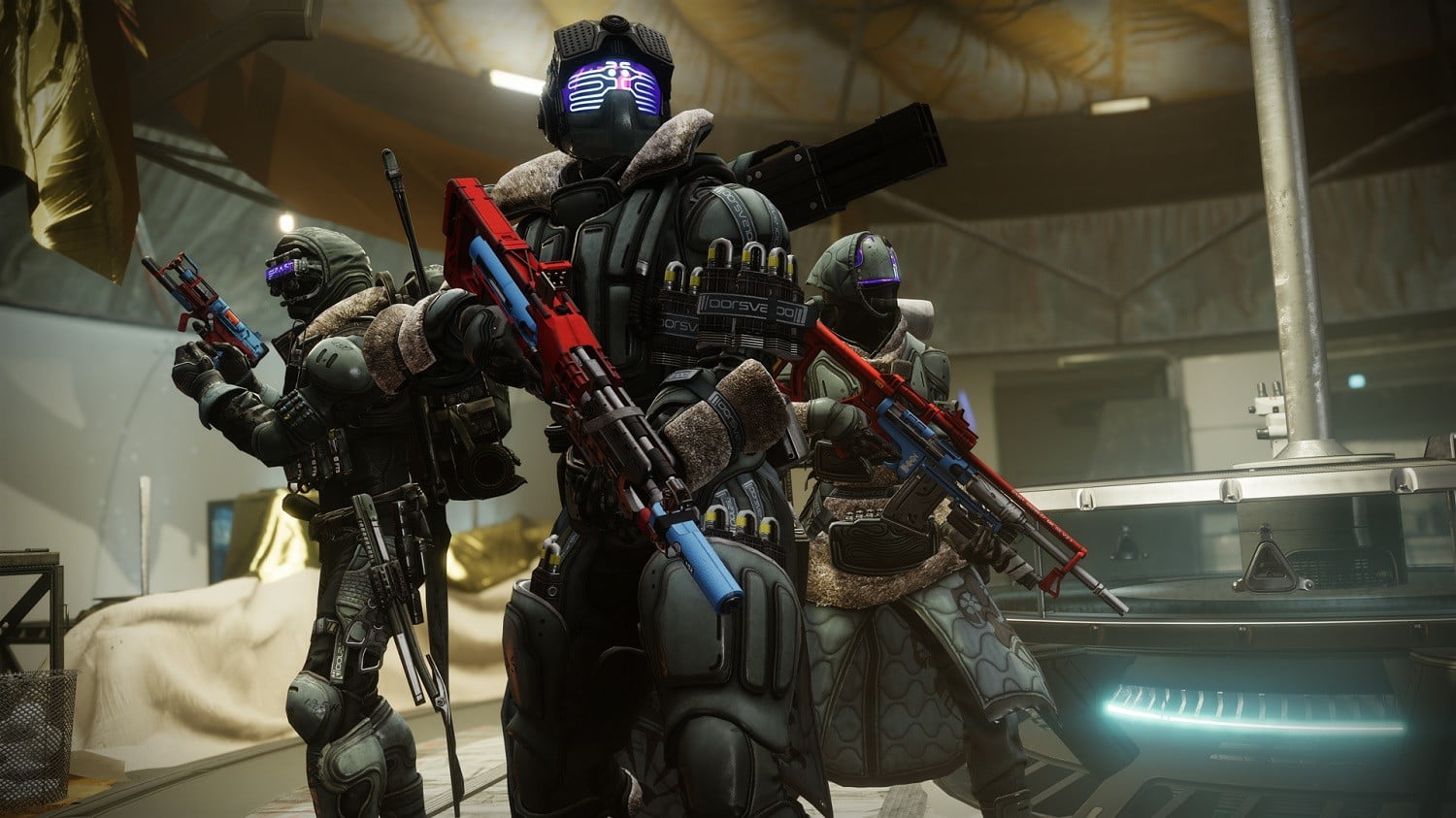Halo Infinite‘s multiplayer is here, and it’s a big departure for the franchise. The gameplay itself is core to Halo, but the free-to-play model, battle pass system, and day-one release on PC are new for the series. Halo Infinite is a game built for 2021, and after spending some time slaying Spartans, I couldn’t stop thinking about another shooter built for 2021: Destiny 2.
As we start looking forward to a new era of Halo multiplayer, it’s important to look back. Bungie built the the Halo series originally, though it’s now developed by 343 Studios, which handled Halo Infinite. Since the handover, Bungie has since moved on to Destiny 2, a game that left many of its original Halo ideas on the cutting room floor. Looking at the two games side by side, both Destiny 2 and Halo Infinite can learn from each other’s approach to PvP.
Bungie’s long road to the Crucible
To talk about Halo Infinite, we need to start examining Bungie’s original work on the first handful of Halo games. Long before 343 Industries took up the mantle of developing new Halo releases, Bungie built the foundation for the series — a rock-solid shooter format that would influence the genre at large.
As early as Halo: Combat Evolved, Bungie was experimenting with ability pickups: Invisibility and the overshield. Both are still present today in Destiny 2, even if they come in different forms. These pickups likely drew inspiration from arena shooters like Quake, where multiplayer was about dotting around the map for pickups as they spawned.
Flash forward to Halo 3, and you can see more connective tissue. In PvP, Halo 3′s Regenerator is similar to the Warlock’s healing rift in Destiny 2, and deployable cover is basically the same as the Titan’s shield.
The critical change with these pickups is that Spartans could choose when to deploy them, unlike invisibility and the overshield, which activated immediately upon pickup in the style of a traditional arena shooter.
Bungie took the system a step further in the final Halo release it worked on: Halo Reach. Instead of pickups, Spartans could slot an armor ability into their loadout before a match, with the ability coming back online after a cooldown. And it’s only fitting that once cooldowns were brought into the fold, Bungie moved on to start developing the original Destiny.
Crucible in Destiny “felt more traditional to Halo,” according to Luke “DR_BIG_SMOKE” Wilson, who has been playing Destiny since the first alpha period. There were a few major differences, though. Each class now had access to a map-melting super ability that could take out even the strongest Guardians, and random perks on weapons gave players more choice in how they wanted to play. The Crucible also set game modes up for 6v6 instead of the 4v4 featured in the vast majority of Halo multiplayer modes.
That changed in Destiny 2, where Bungie looked back to Halo for inspiration. Game modes went back to 4v4, random rolls were gone for weapons, and supers, although present, took much longer to come online. “Let me paint the picture: You moved way slower, it was teams of four instead of six, and there weren’t special weapons in the game, and all of the weapons had set rolls. So that time period almost felt like an arena shooter,” Wilson tells .

These changes were mostly an effort to combat the issues with the Crucible in Destiny. Random weapons rolls meant some options were objectively better than others, super spam took the focus off of gunplay, and special ammo weapons (shotguns, fusion rifles, sniper rifles, and single-shot grenade launchers) were much more powerful than primary options — an issue Bungie later fixed in Destiny by decreasing the special ammo drop rate.
As any day-one Destiny 2 player can tell you, these changes weren’t the best for the game. Destiny 2 was heavily scrutinized at launch, and it wasn’t until the start of the game’s second year and the launch of Forsaken expansion for Destiny 2 that all of the issues were fixed. Patch 1.1.4 increased the super regeneration rate and movement speed, Patch 1.2.3 brought 6v6 back to the Crucible, and Patch 2.0, which lined up with the launch of Forsaken, retooled the weapon system to bring special ammo back.
Bungie has patched, tweaked, and experimented with PvP ad nauseum since. But most Destiny 2 players will still tell you that it has problems, and they’ll cite the same issues Bungie tried to address with Destiny 2′s first iteration of PvP: Ability spam, objectively better weapon rolls, and special ammo weapons making some battles essentially “free.”
With the launch of Destiny, Bungie took what it had built with the Halo franchise and expanded it. And with subsequent tweaks and updates, referenced what made Halo’s multiplayer as popular as it was. With a new Halo game — one that’s built for the market Destiny 2 exists in — we have a chance to see what 343 Industries took as inspiration, and what Bungie looked past when balancing the Crucible.
What Destiny 2 can learn from Halo Infinite
Like any good arena shooter, Halo Infinite is all about resource and map management. The key to success is to learn when and where weapons, grenades, and equipment drop and farm those locations. Either they will give you a chance to funnel up your opponents and take them out, or allow you to pick up gear that’s better than what the opposing team has.
Destiny 2 has resource management, but it looks very different. Bungie moved the resources from the maps to the characters. Instead of tracking down the rocket launcher or sniper rifle spawn, Guardians focus on ability cooldowns and ammo drops. The only resource on the map Guardians need to worry about is ammo, which serves a similar purpose as gear drops in Halo Infinite.
While it serves a similar purpose, as mentioned, it’s not to the same effect. Heavy and special ammo are still strong in Destiny 2, so much so that the drop rates are incredibly low. Ammo doesn’t spawn frequently, and when it does, you don’t get very much. For heavy ammo, most weapons only get a single shot, and according to SMOKE, “most people just miss with their heavy.”
That puts the focus on strong primary weapons: Hand cannons and pulse rifles, in particular. Unless you go all-in with a build — maybe a Void Hunter that slides around with a shotgun — because there isn’t a big incentive to manage the ammo drops. Ammo is powerful, but it’s not as attractive when an opponent can can snap off a few headshots from across the map with a primary and win the fight.
Then there are the abilities, which players can exploit to make gunplay obsolete. Exotics like Fr0st-EE5 give players their abilities back faster, and focusing on a single stat, such as mobility for Hunters, can bring class abilities back online immediately. That’s not a bad thing on its own, but spamming your class ability can give you a whole host of buffs with exotics like Dragon’s Shadow and Wormhusk Crown.

Balance is the difference. In Halo Infinite, every Spartan enters the battlefield on a level playing field, and it’s up to them to manage the resources that everyone can access. In Destiny 2, players with deep game knowledge and access to the right equipment enter with a leg up. And because there aren’t many resources to manage on the battlefield, a good portion of matches will be heavily weighted in favor of one team or another.
It’s not that Destiny 2 is wrong for having the system it does; abilities and optimizing them is what makes Destiny 2 so special. But it leads to a situation where Bungie is constantly chasing its tail. This season, it’s about nerfing the exotic Vex Mythoclast fusion rifle and special ammo drops. Last season, it was about nerfing 120RPM hand cannons. Before that, it was about getting the dominant Stasis subclass in check.
By focusing on the basics — resource management, gunplay, and universal stats — Halo Infinite offers a more balanced PvP experience like previous Halo releases have. Destiny 2 will likely never get to that place. Certain metas will rise, others will fall, and players will continue to exploit whatever gives them the best chance of success.
What Halo Infinite can learn from Destiny 2
Destiny 2′s PvP weakness is also its source of strength. For all of the problems random weapon rolls, abilities, and loadouts bring to the Crucible, they also bring something that Halo Infinite sorely lacks: Identity. When you enter the Crucible, you’re coming in as a Guardian who can harness the powers of the Light and the Darkness, fit with gear that you earned slaying gods.
You’re not just a Guardian in Destiny 2 — you’re a Void Hunter, a Stasis Warlock, a Solar Titan, or whatever subclass you want to attach to the class you main. It’s the “power fantasy from day-to-day, moment-to-moment gameplay” that makes Destiny 2 different, which is something that Halo Infinite doesn’t offer.
Of course, you’re still a powerful super soldier in Halo Infinite. The game offers its own power fantasy. But by leveling the playing field so each Spartan enters with the same advantage, Halo Infinite isn’t able to establish the same identity that Destiny 2 has. It may not have the extreme meta lows that Destiny 2 has seen, but it won’t have the highs, either.
Halo Infinite could also take some notes from Destiny 2 when it comes to incentives. It’s no secret that Halo Infinite’s battle pass isn’t the best, with experience only doled out when you complete certain challenges. Compare that to Destiny 2, which has multiple interconnected systems to reward experience, loot, cosmetics, and materials.
In Destiny 2, there is always something to chase. And there’s enough to chase that players can choose what they want to go after. Matches reward you with experience, rank progress, and loot, and you can stack bounties (essentially the equivalent to Halo Infinite’s challenges) to further optimize your playing time.
Halo Infinite is about basics and balance, but in a time when so many multiplayer shooters are about the same thing, how does it stand out? The gunplay is great, the maps are fun to run around, and the new equipment items break up the gameplay nicely. But by not taking the risk of breaking something, 343 Industries has created a game that doesn’t feel as unique as Destiny 2 or other competitive shooters — there’s a reason a class-focused game like Apex Legends draws more players every day than Halo Infinite has in its first few.
None of this is to say Halo Infinite is doomed to fail. There’s a lot more that goes into a game’s success than identity (Call of Duty:Warzone is one of the most popular games in the world, after all), and Halo Infinite is still loads of fun to play.
Forging an identity
Halo Infinite and Destiny 2 set out to be wildly different games, and there isn’t a reason why two different approaches to PvP game design can’t work. Still, it’s interesting to see how far Bungie has come, what 343 Industries took from the history of Halo, and how both studios made compromises along the way.
Through the dozens of updates Halo Infinite will inevitably receive over the coming months and years, it’s on 343 Industries to create an identity that feels unique to Halo. In some ways it already has — take the lack of ADS (aim down sights), for example, which removes a lot of cover peek potential that’s present in Destiny 2.
For Destiny 2, PvP game balance is a problem without a solution. Bungie is on its own grind to balance the Crucible as new weapons, mods, and subclasses rise to dominance without neutering the power fantasy that gives the game its identity. A great way to bring balance is to incentivize resource and map management, which Bungie has been moving away from since the original Destiny.
The good news for players is that we can have our cake and eat it, too. Destiny 2 and Halo Infinite are both free to play, so you can download them and enjoy the effort that has gone into two connected, though wildly different, forms of PvP.


